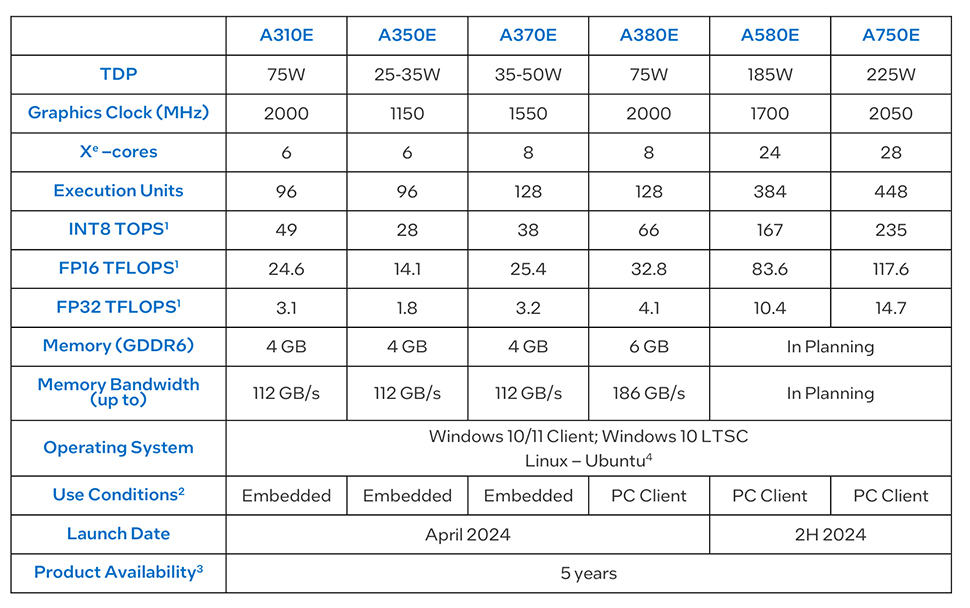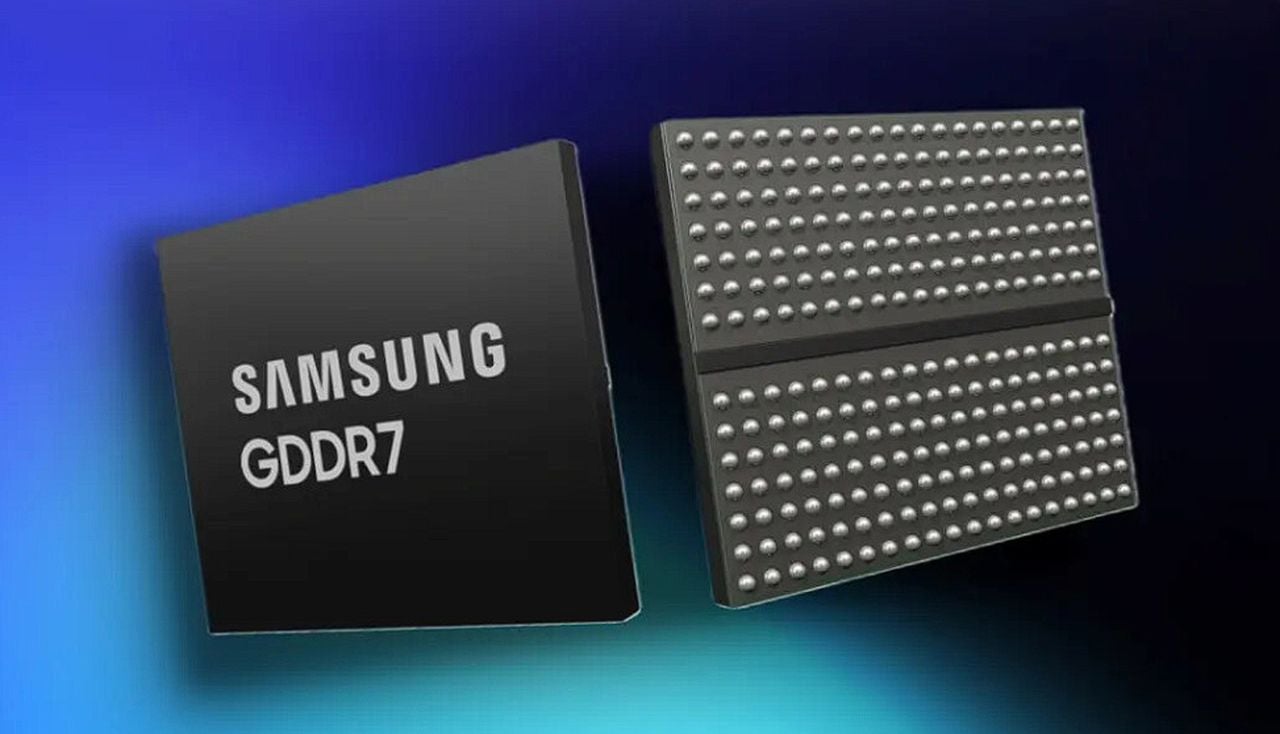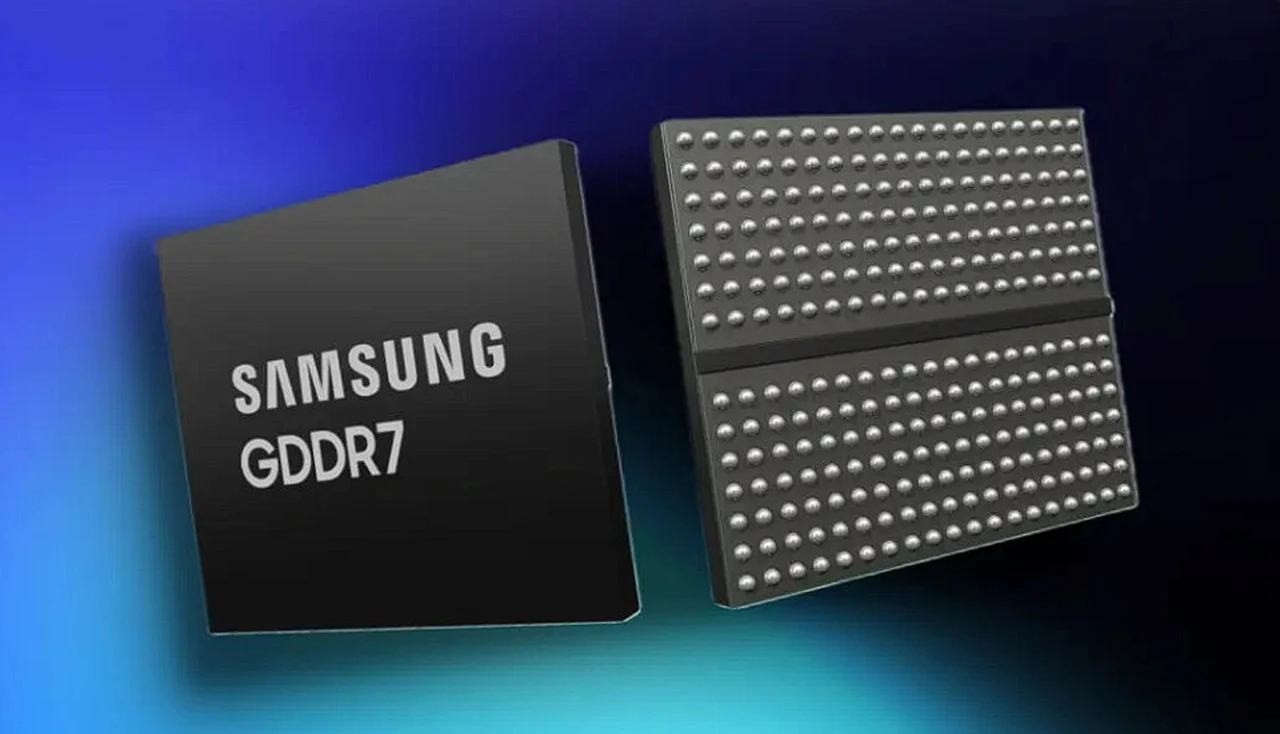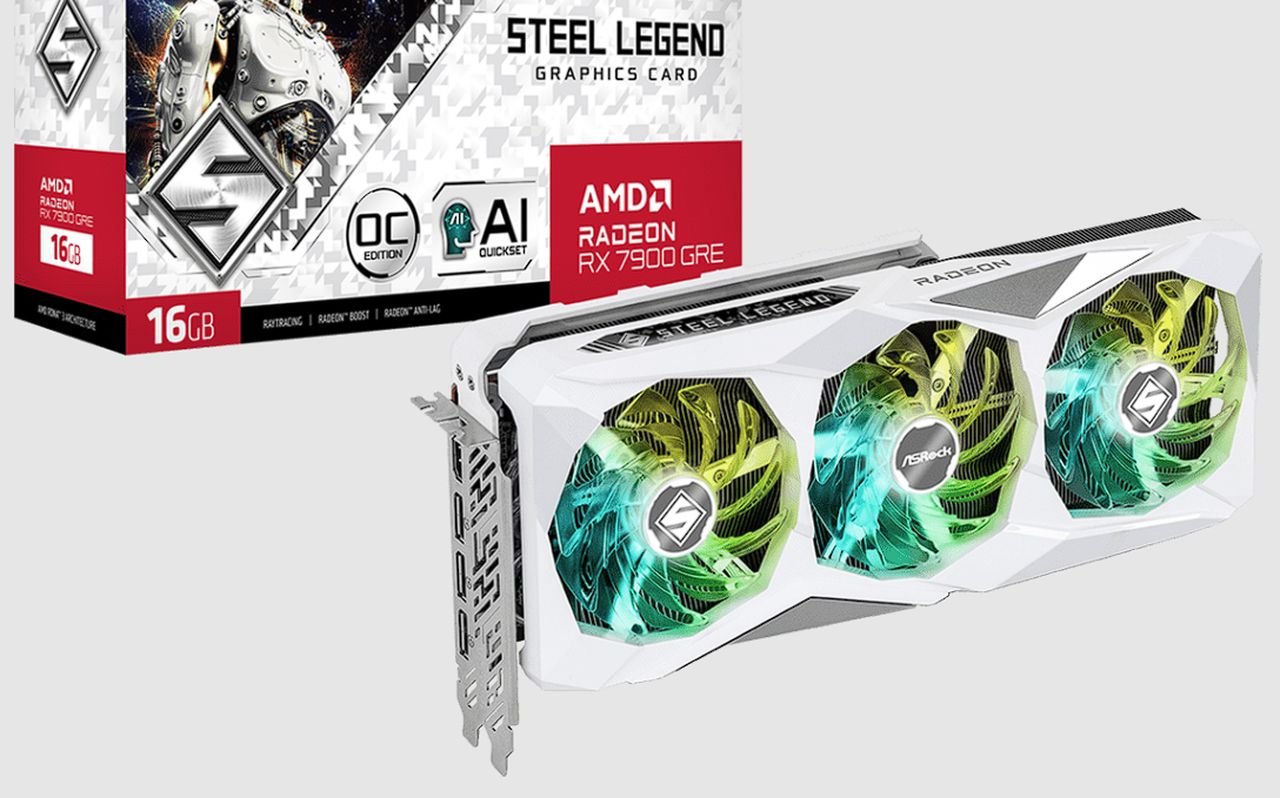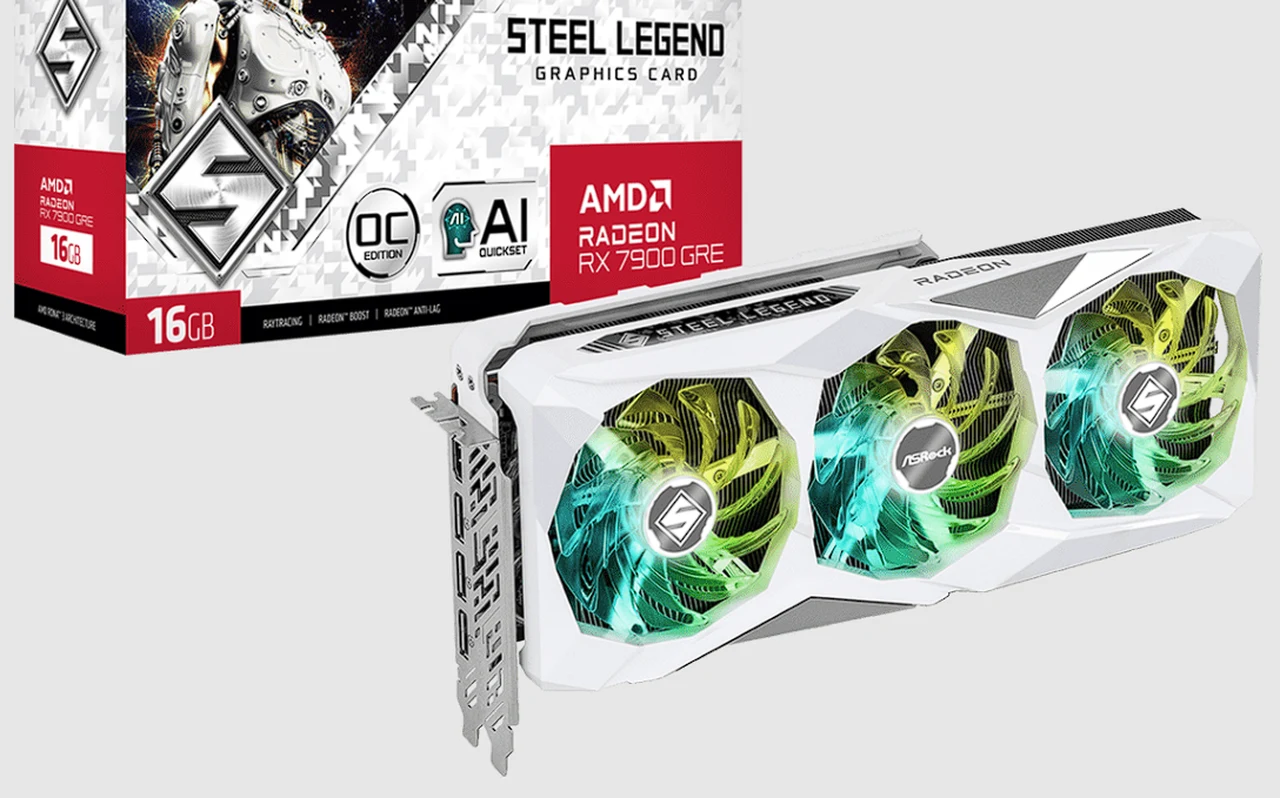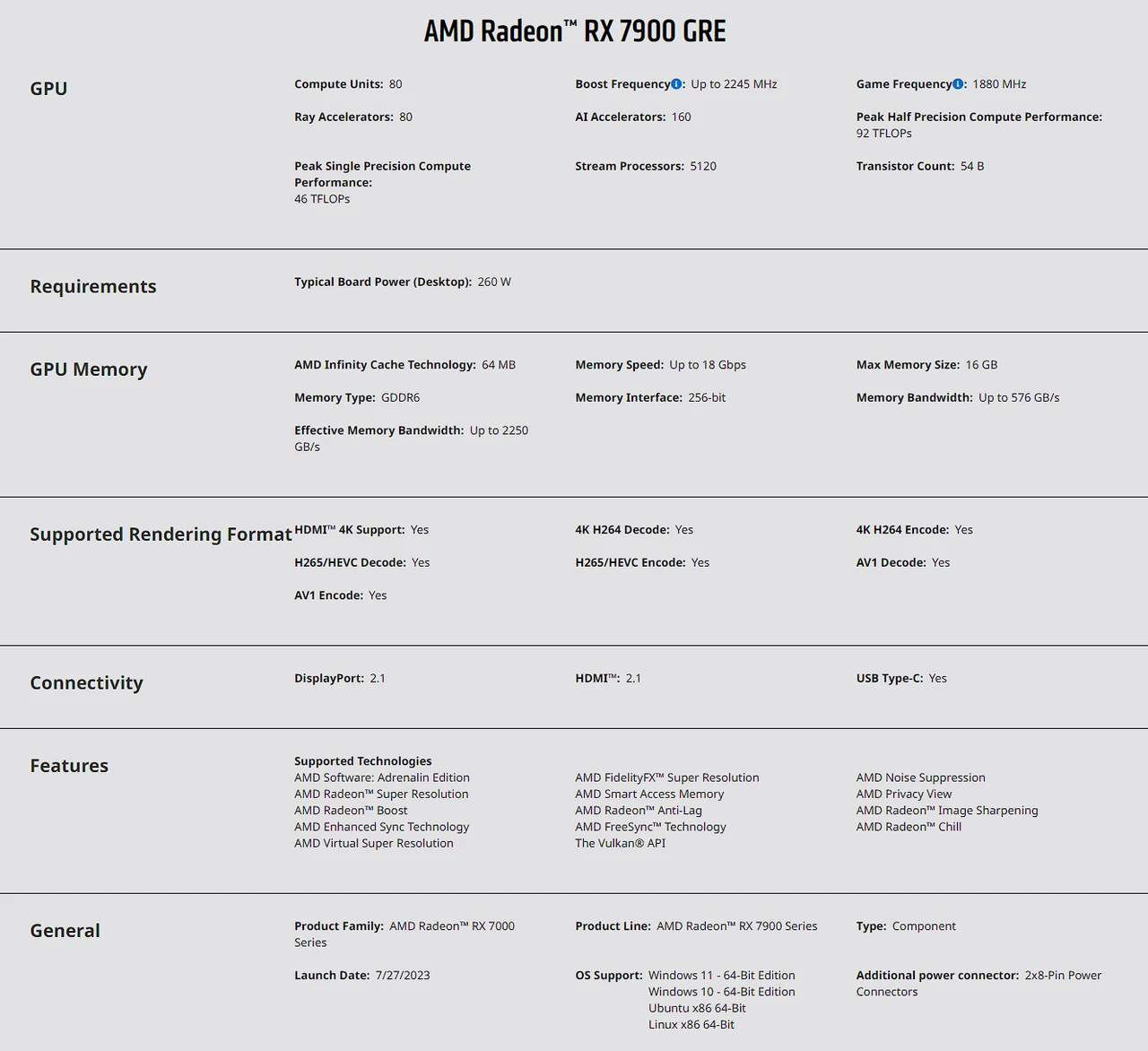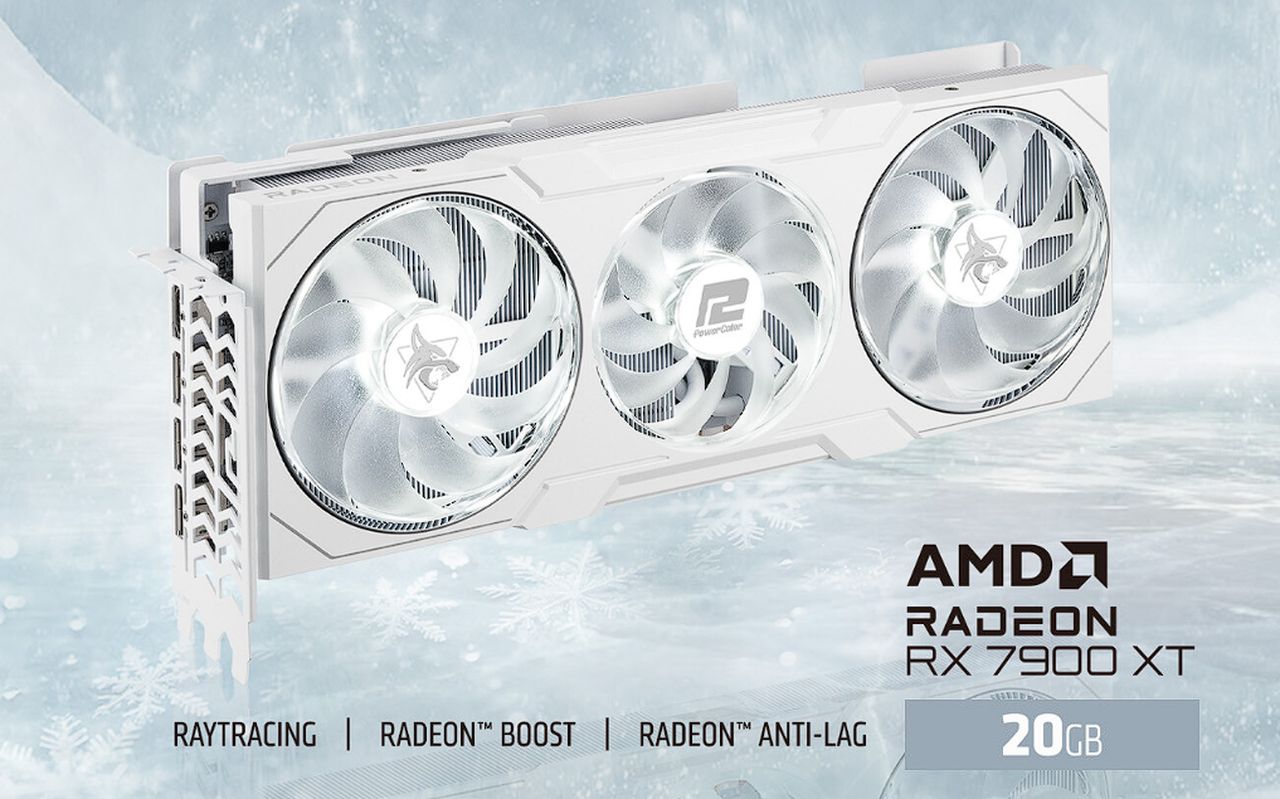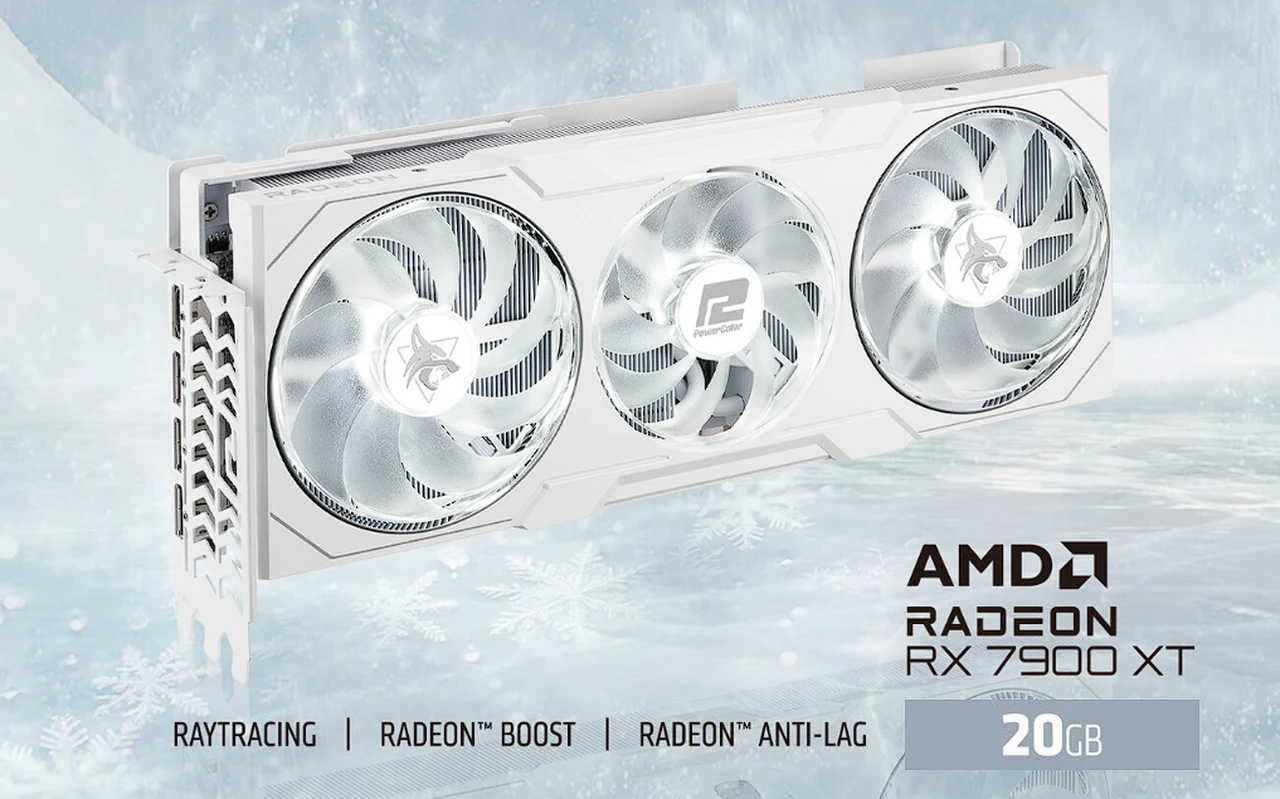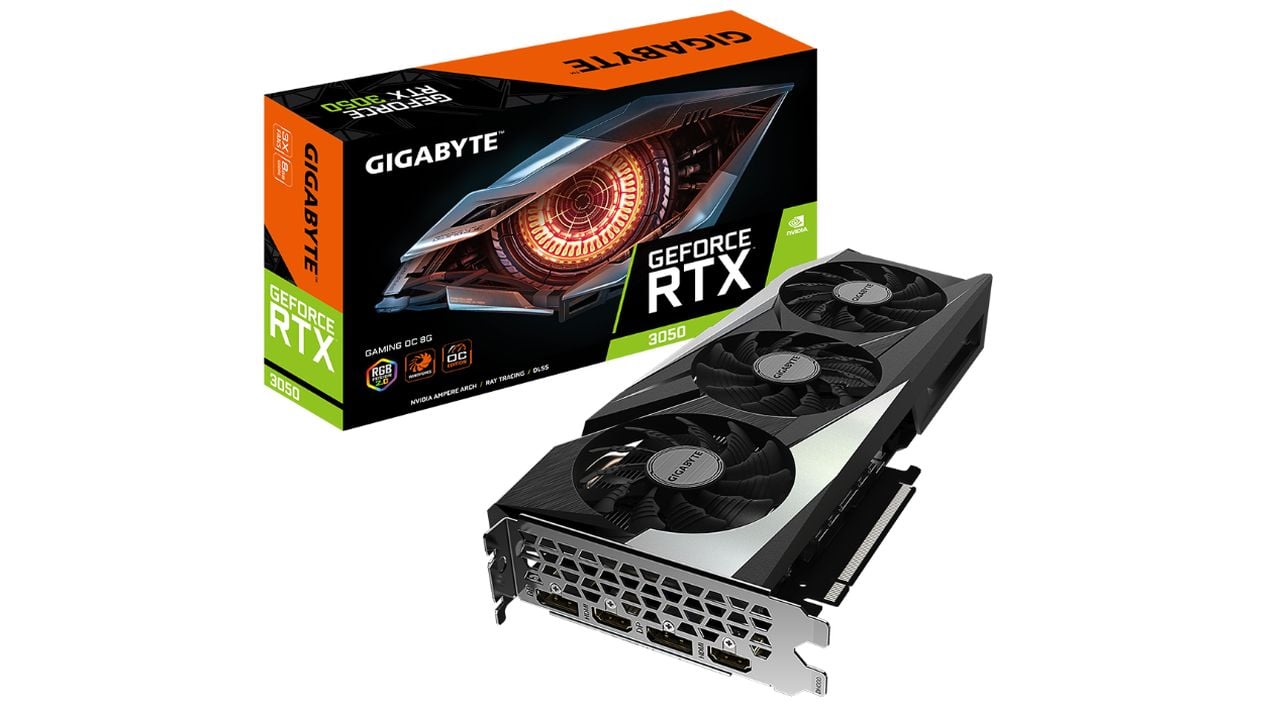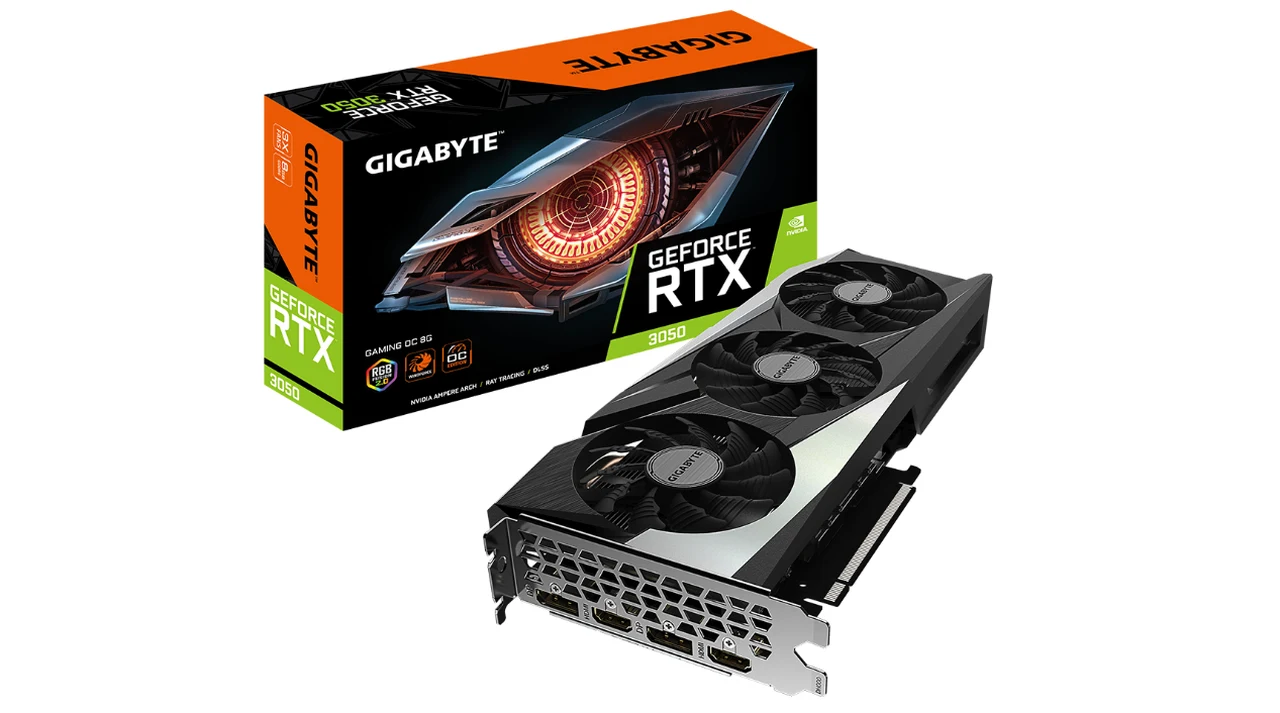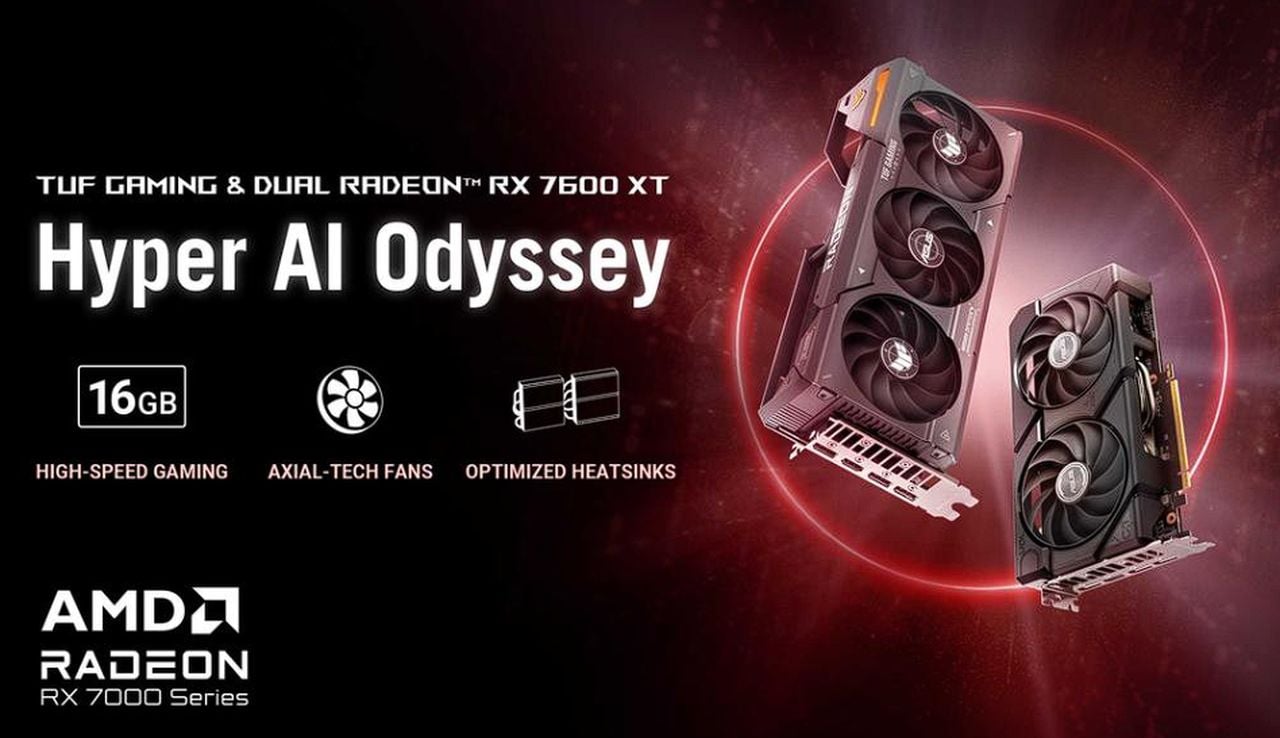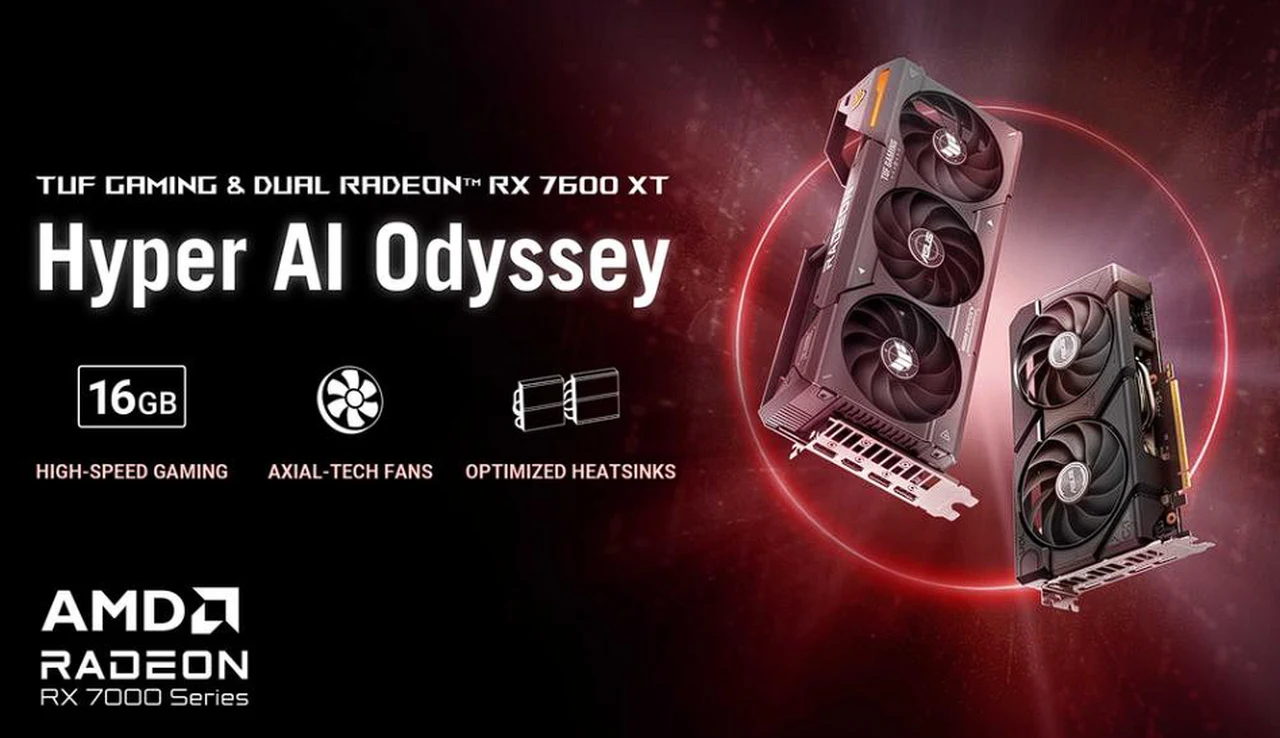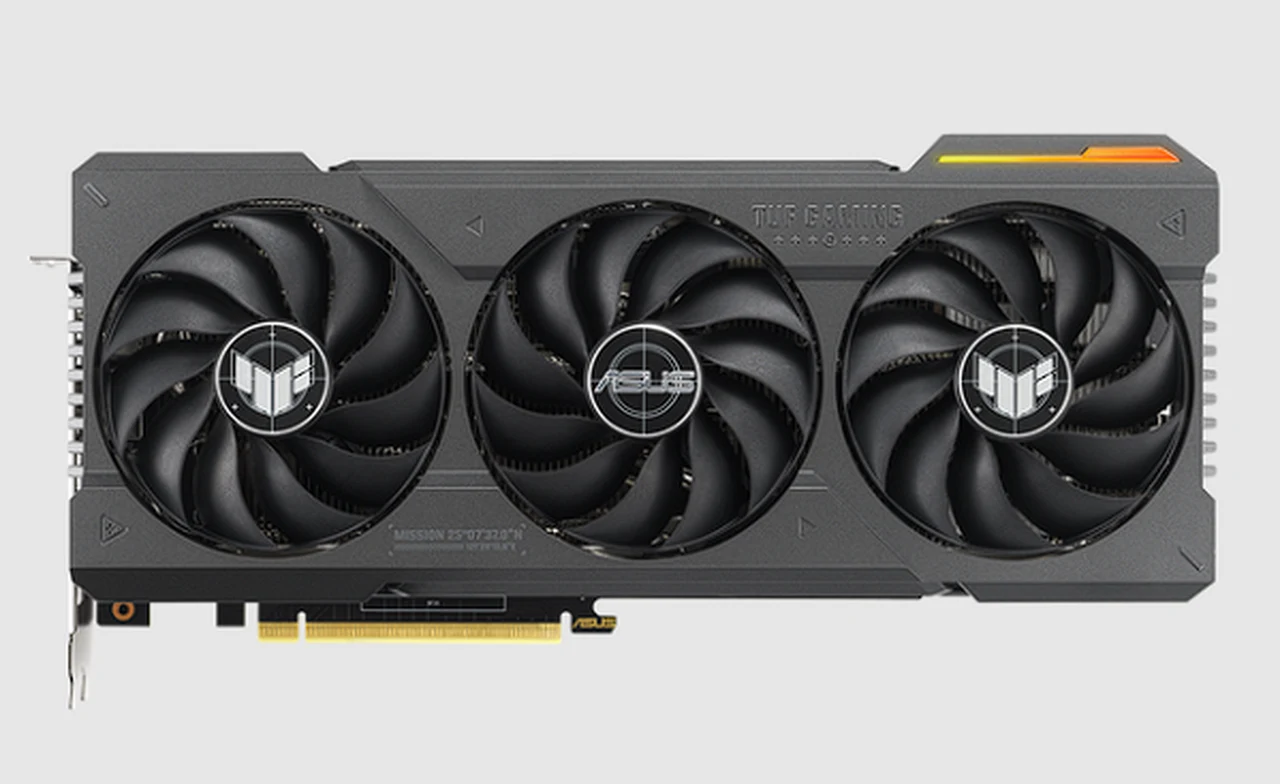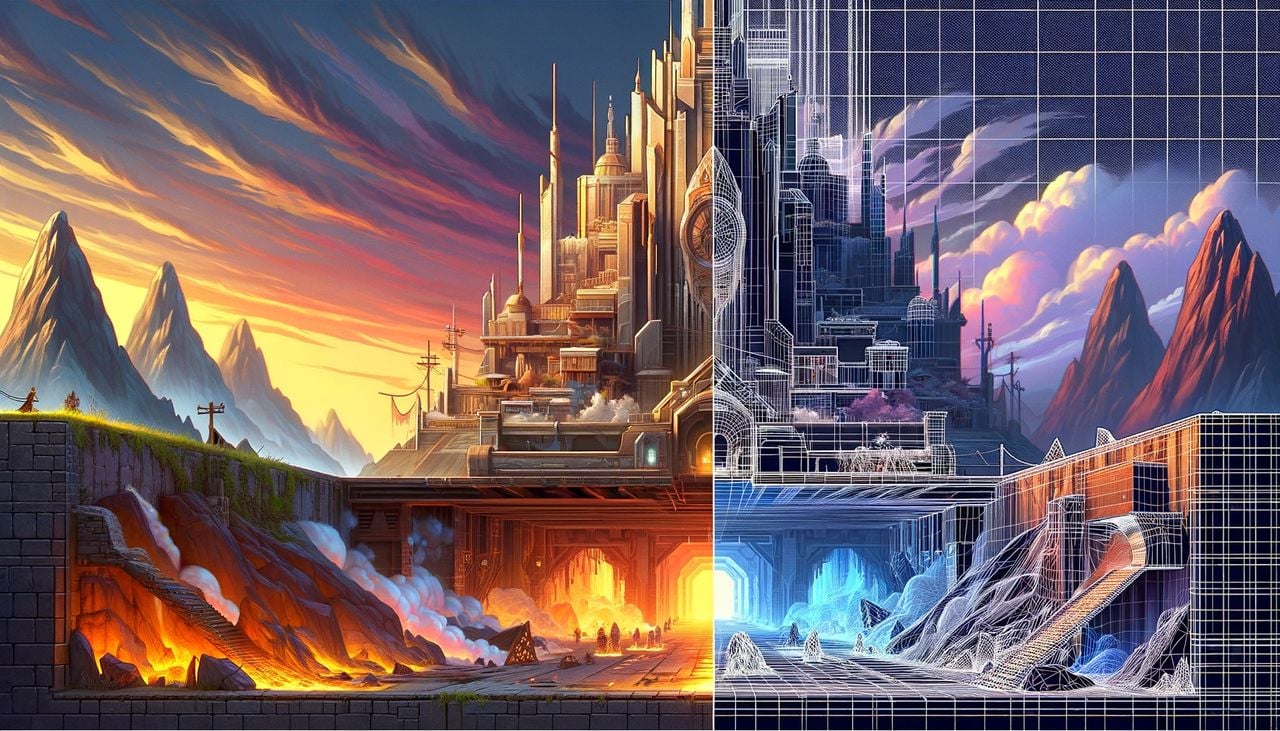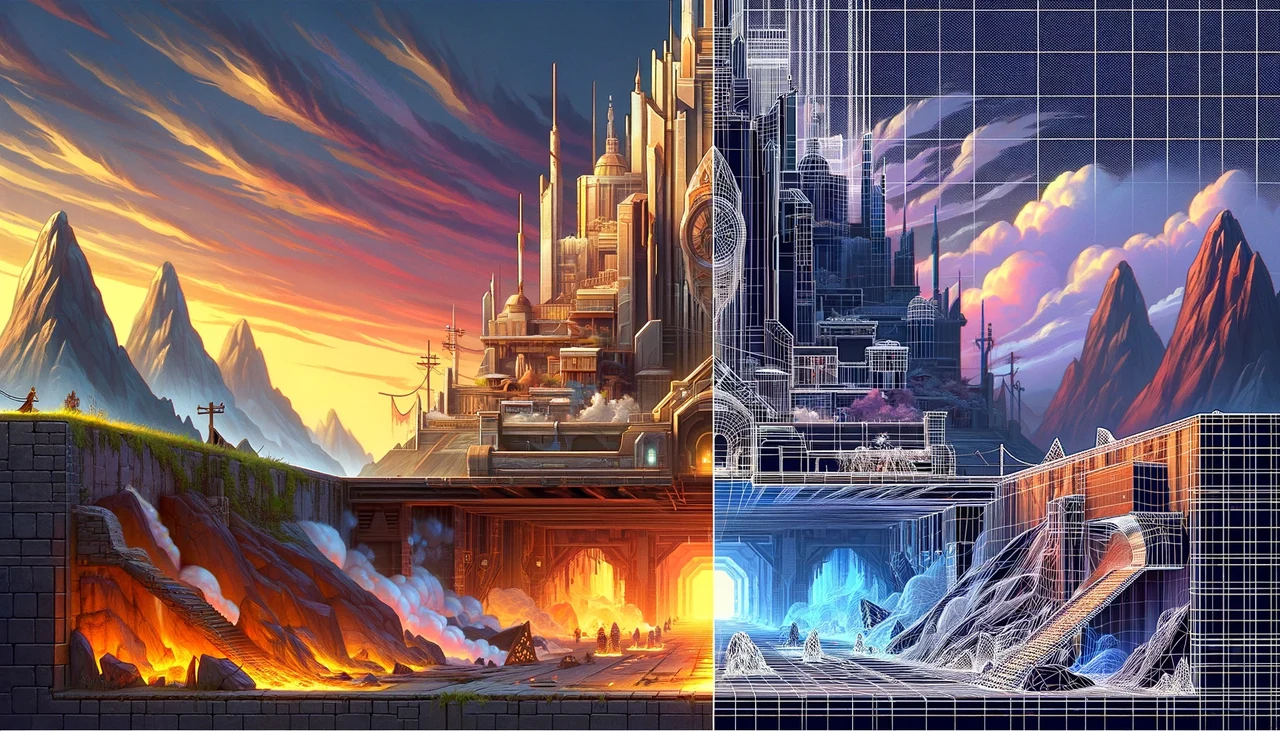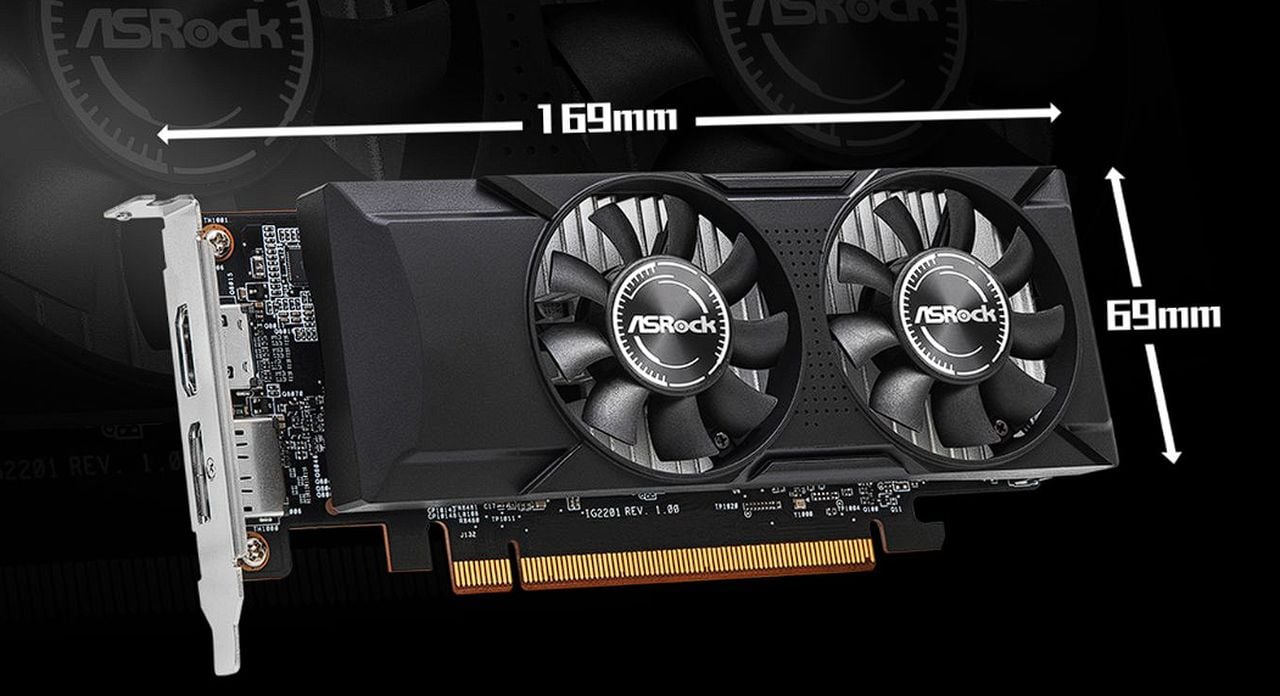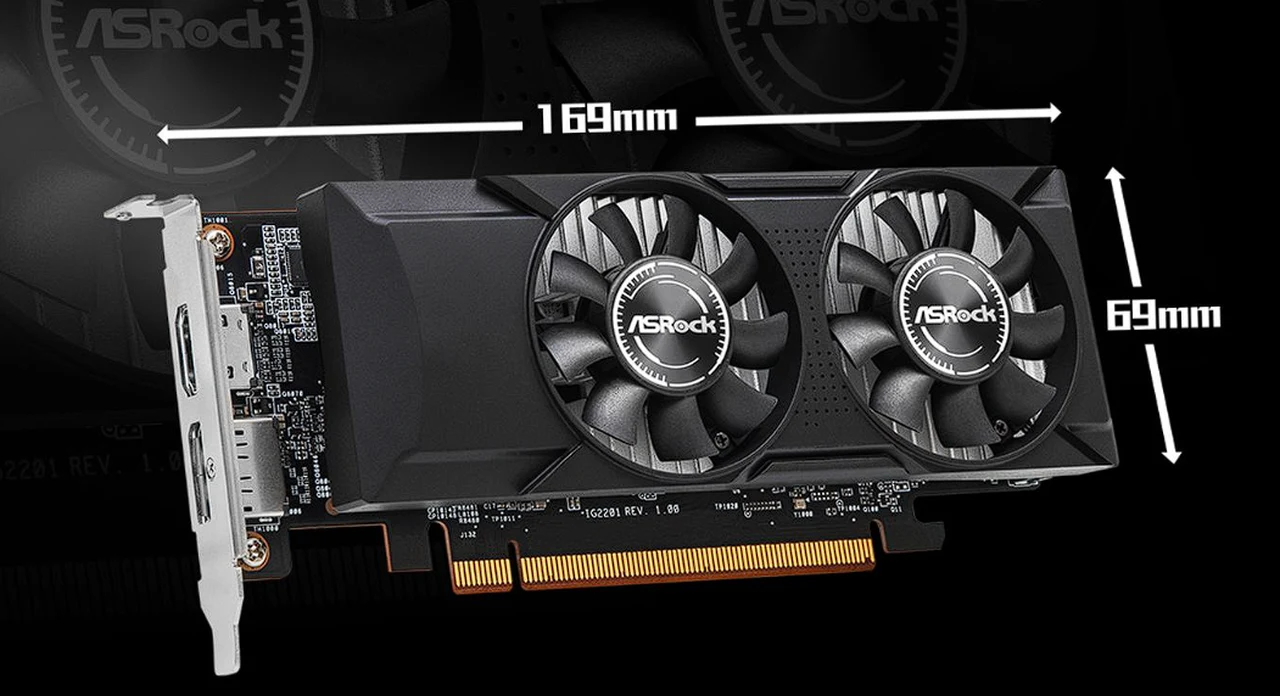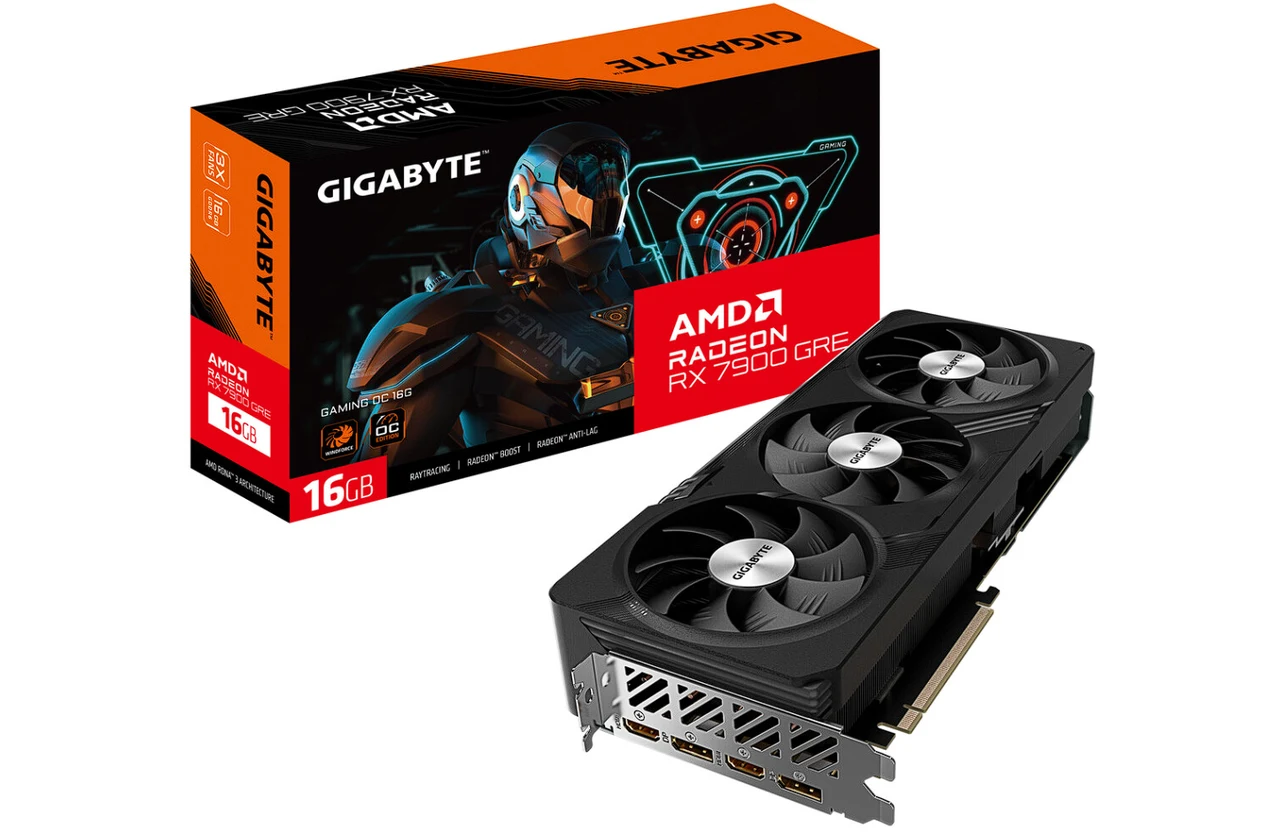
GIGABYTE is set to release a new graphics card that promises to take gaming and streaming to the next level. The Radeon RX 7900 GRE OC GPU card, scheduled to hit the market on February 27, 2024, is designed to deliver an exceptional gaming experience, especially at 1440p resolution, and is also adept at handling 4K content. This latest offering from GIGABYTE is a testament to the company’s commitment to pushing the boundaries of gaming technology.
At the heart of the Radeon RX 7900 GRE Gaming OC is AMD’s RDNA 3 architecture, which is paired with a substantial 16 GB of GDDR6 memory. This combination is aimed at providing gamers with high-refresh-rate gaming and seamless streaming capabilities. One of the key features of this graphics card is its WINDFORCE cooling system. This system incorporates three blade fans that utilize alternate spinning technology, which is designed to improve airflow and heat dissipation, keeping the card cool even under heavy use.
Radeon RX 7900 GRE OC GPU
The cooling system has been further enhanced with features such as direct copper plate contact, composite copper heat pipes, and 3D active fans. These components work in unison to ensure that the GPU remains at a low temperature, even during long and intense gaming sessions. Additionally, the card is equipped with screen cooling technology that increases the area for thermal dissipation, contributing to a cooler and more efficient performance. If you would like to learn more about the performance of the Radeon RX 7900 GRE check out our previous article.
For gamers who like to fine-tune their hardware, the Radeon RX 7900 GRE Gaming OC offers a dual BIOS switch. This switch allows users to choose between an OC mode, which maximizes performance, and a SILENT mode, which reduces noise for quieter operation. Durability is also a major consideration in the design of this graphics card. It features graphene nano lubricant, which extends the life of the fans, and a metal back plate that, along with ULTRA DURABLE certified components, ensures the card’s longevity.
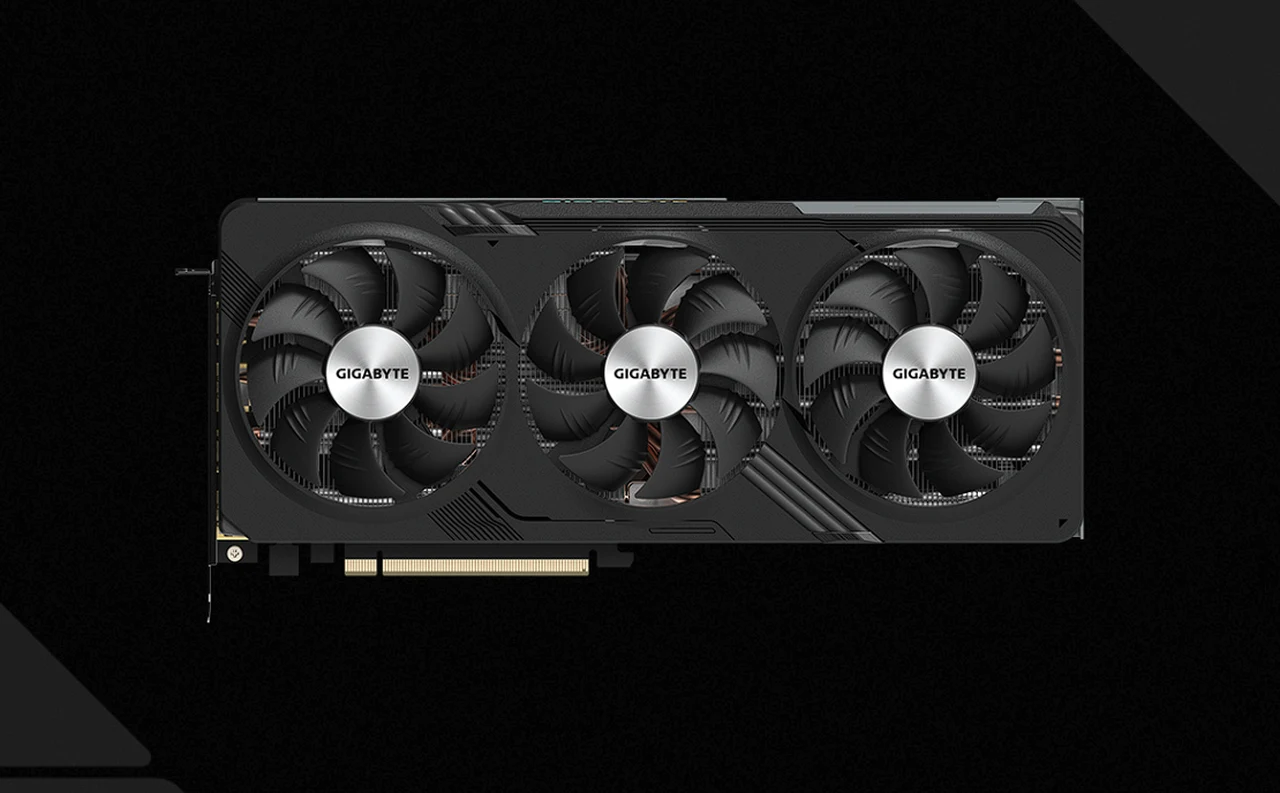
The customization options extend beyond performance settings. The graphics card includes RGB lighting that can be personalized to match the look of your gaming setup. This lighting is controlled through GIGABYTE’s CONTROL CENTER software, allowing you to create a gaming environment that reflects your style.
The Radeon RX 7900 GRE Gaming OC Graphics Card from GIGABYTE is more than just a piece of hardware; it’s a comprehensive solution for gamers and streamers who demand high performance. With its advanced architecture, ample memory, and state-of-the-art cooling solutions, it is well-equipped to handle the most demanding gaming and creative tasks. The card’s features, such as alternate spinning technology, a dual BIOS switch, and graphene nano lubricant, reflect a dedication to quality and durability. Additionally, the customizable RGB lighting adds an element of personalization to your gaming experience.
Advanced Gaming Performance with Radeon RX 7900 GRE Gaming OC
The upcoming Radeon RX 7900 GRE Gaming OC Graphics Card by GIGABYTE is engineered to take gaming and streaming to the next level. It is specifically optimized for delivering a superior gaming experience at 1440p resolution, while also being capable of handling demanding 4K content. The graphics card’s prowess is a reflection of GIGABYTE’s dedication to pushing the boundaries of gaming technology, ensuring that gamers can enjoy the latest games with high fidelity and smooth frame rates.
Central to the Radeon RX 7900 GRE Gaming OC’s performance is AMD’s RDNA 3 architecture, which provides a robust foundation for high-refresh-rate gaming and efficient streaming. The card’s generous 16 GB of GDDR6 memory complements this architecture, allowing for quick and responsive game loading times and the ability to handle complex textures and large game worlds without compromising performance. The WINDFORCE cooling system, a hallmark of GIGABYTE’s design, employs three blade fans with alternate spinning technology to enhance airflow and heat dissipation, ensuring the graphics card remains cool even during extended gaming sessions.
Enhanced Cooling Solutions for Sustained Performance
The Radeon RX 7900 GRE Gaming OC’s cooling system is a testament to GIGABYTE’s commitment to performance and stability. It features direct copper plate contact and composite copper heat pipes that efficiently transfer heat away from the GPU. The inclusion of 3D active fans contributes to a dynamic cooling process that adapts to the card’s thermal demands. Additionally, the card’s screen cooling technology expands the thermal dissipation area, which plays a crucial role in maintaining a cool and efficient operation, even when the graphics card is under heavy load.
This advanced cooling system is crucial for gamers who demand uninterrupted high performance. It ensures that the GPU operates within optimal temperature ranges, which not only enhances performance but also extends the lifespan of the graphics card. By keeping temperatures low, the Radeon RX 7900 GRE Gaming OC can sustain high frame rates and deliver a smooth gaming experience without the risk of overheating.
Customization and Durability for the Enthusiast Gamer
For gamers who enjoy personalizing their gaming hardware, the Radeon RX 7900 GRE Gaming OC offers a dual BIOS switch. This feature allows users to toggle between an overclocked mode for maximum performance and a silent mode for quieter operation, providing flexibility based on individual preferences or gaming scenarios. The card’s durability is further reinforced with the use of graphene nano lubricant, which prolongs the lifespan of the fans, and a sturdy metal back plate that, along with ULTRA DURABLE certified components, ensures the card’s longevity.
The customization options for the Radeon RX 7900 GRE Gaming OC extend to aesthetic enhancements as well. The graphics card includes RGB lighting that can be tailored to complement your gaming rig’s visual theme. Controlled through GIGABYTE’s CONTROL CENTER software, the RGB lighting allows gamers to create a personalized ambiance that matches their style and enhances their gaming environment.
The Radeon RX 7900 GRE Gaming OC Graphics Card is designed to meet the needs of gamers and streamers who prioritize high performance and customization. Its advanced architecture, ample memory, innovative cooling solutions, and attention to detail in terms of quality and durability make it a formidable choice for those looking to upgrade their gaming setup. With the ability to personalize performance settings and aesthetics, this graphics card is set to be a compelling option for enthusiasts eager to elevate their gaming experience.
Gamers and streamers looking for a new graphics card that offers both power and customization will find the Radeon RX 7900 GRE Gaming OC to be an exciting addition to their setup. Keep an eye out for its release to experience a new level of gaming performance.
Filed Under: Hardware, Top News
Latest timeswonderful Deals
Disclosure: Some of our articles include affiliate links. If you buy something through one of these links, timeswonderful may earn an affiliate commission. Learn about our Disclosure Policy.
